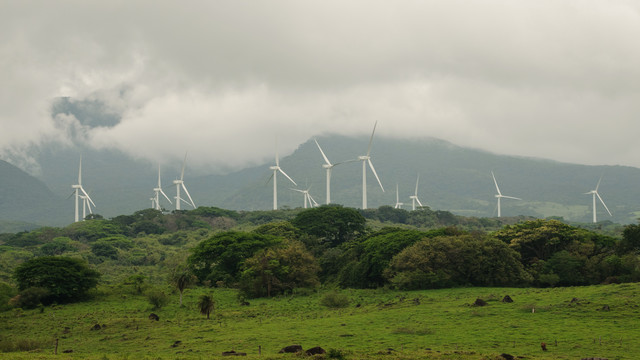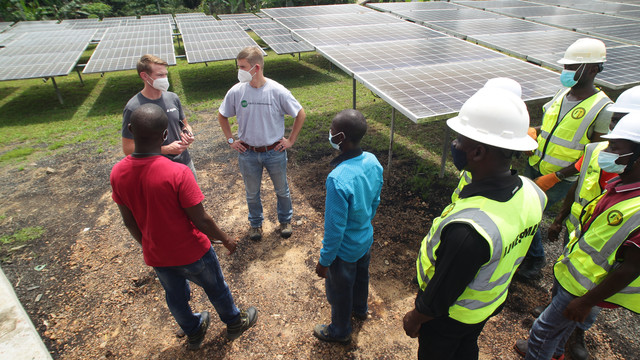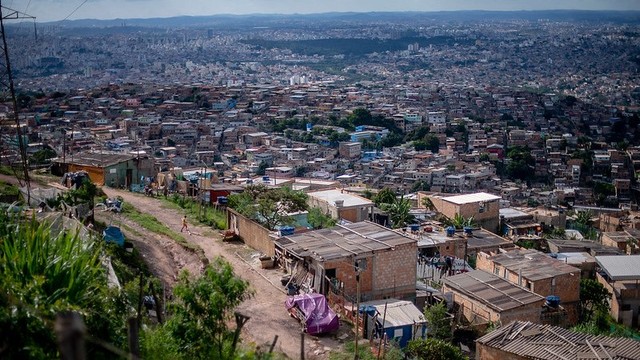Will climate change render the SDGs impossible?
Later this year, countries will be meeting at a UN Summit in New York to agree on a set of post-2015 Sustainable Development Goals (SDGs) which will build on the Millennium Development Goals.


A women carries supplies through a flooded street in Cap-Haïtien, Haiti, after thousands were displaced following floods in 2014. Studies have shown that, when they are socially or economically disadvantaged, more women die in hurricanes and floods (Photo: United Nations Photo, CC BY-NC-ND 2.0)
Yet 2015 is not only important for development, it is also vitally important for climate change – as countries are set to agree on a global climate deal in Paris in December.
The 5th Assessment Report of the United Nations' Intergovernmental Panel on Climate Change (IPCC) brought stark warnings about the impacts of climate change on developing countries. These impacts will fall hardest on countries with high poverty and least capacity to adapt, including on the Least Developed Countries (LDCs). Our recent paper summarised the impacts for each of the SDGs.
Basic needs: food, water, and sanitation
The new set of 17 SDGs ranges from those that are critical to tackling poverty – such as health, food security and water – to those affecting natural resources that underpin the economy, such as ecosystems and marine resources.
The evidence from the IPCC shows that every one of these goals could be affected by climate change, either directly or indirectly. For example, changes to the climate could affect yields in some areas, with impacts on food security. By 2080, climate change may lead to 170 million more undernourished people (PDF).
Impacts on agriculture have a knock-on effect on poverty. Under a scenario with lower crop yields, countries like Bangladesh could experience a 10.32–1.4 per cent of GDP in 2030 (PDF).
Climate change could have impacts on inequality because the most disadvantaged groups are particularly affected by climate hazards. When they are socially or economically disadvantaged, more women die in hurricanes and floods (PDF).
In situations where people are displaced by extreme weather, there may be impacts on efforts to promote safe migration (Target 10.7). Land access (Target 1.4) could be threatened – as rising sea levels endanger the very existence of some island nations.
Focus on the Least Developed Countries
The world's 48 LDCs – home to more than 880 million people – are particularly vulnerable to climate impacts. Climate change impacts act as a threat multiplier for poor people, adding to existing stresses. High proportions of people in poverty in LDCs do not have a buffer to cope with extreme events such as cyclones or droughts.
For instance, in Africa, where several LDCs are located, projected impacts of climate change include water stress and risks for agriculture. In some tropical countries, crops are already close to the temperature limit which they can tolerate. These countries will be particularly vulnerable to warming.
High poverty levels are likely to make the post-2015 goals more difficult to achieve for LDCs, even before we consider the added impacts of climate change. That is why there has been a call for countries to integrate climate change into national development plans, and LDCs have called for rich countries to allocate 50 per cent of their official development assistance to LDCs.
At the Fourth United Nations Conference on LDCs, a target was set for donor countries to allocate 0.15-0.20 per cent of their gross national income as official development assistance to LDCs – but some donor countries have not yet met this.
What does this mean for Financing for Development?
Climate change will add to the costs of achieving the post-2015 goals in developing countries. By some estimates, if no action is taken on climate change, the additional costs of the impacts could amount to seven per cent of African GDP by 2100.
At the Financing for Development conference in Addis Ababa on 13-16 July, countries are set to agree on finance arrangements to support implementation of the post-2015 goals. However, it is not clear to what extent the conference will consider climate change.
The impacts of climate change on the SDGs raises even bigger questions.
How will the finance for the post-2015 goals support or enable action on climate change? How can we ensure the goal of providing 'energy for all' can be done with clean energy? How will the SDGs help countries to adapt to climate change impacts?
Clearly, there is a need for these discussions to come together – on development, financing, and climate change – and to be aligned in order to effectively tackle the impacts of climate change, both now and in the future.
Helena Wright (drhelenawright@gmail.com) is a postgraduate researcher at Imperial College London.



